For the last two weeks in Austin there has been a fairly strong southern wind, almost continuously, and many people are reporting seeing fewer migrants, as they are thought to be using this tailwind to get further north with less effort. The case was true for east Texas as well, as there was not a lot of evidence of them in Waller. I need to look at the various internet bird tracking sites to get a better idea if this is true across the state. Nevertheless, I was up early, and after some coffee, ready to make my way around the acreage to see what else was up.
The first bird I saw (actually from through the kitchen window) was an American Crow. It was one of at least 20 that I saw throughout the day. They also provided a sort of background music in the air and appeared to be almost constantly at war with Red-shouldered Hawk(s) in the trees around he house.
Not soon after, as I made my way outside, I saw a few Northern Cardinals bouncing around the fence line on the edge of the horse corral. I am almost positive, by the way, that country cardinals are move vibrant in color than city cardinals but I can't prove it. As I followed the edge of the fence down the side of the woods, I was also able to see the expected Carolina Chickadees and Tufted Titmice. As I was standing there two different pairs of ducks flew low and overhead. The first, coming from and open area by the ponds were Blue-winged Teals, a duck that winters here. The second pair were less easy to identify and disappeared over the second stand of trees before I could get binoculars on them. As I chased another Red-shouldered Hawk to woods behind the house my aunt pointed out a nest by her horses pens and near to the back door of the house.
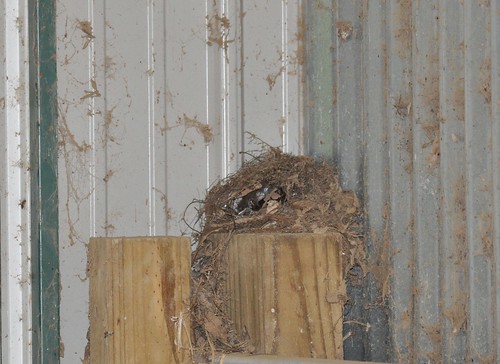
I got closer and closer trying to see if anything was in it until my nose was probably a foot away. Just about the time I saw the distinct supercilium (eyebrow), the Carolina Wren burst out, flying right past my face.
After that we made our way down the long, country driveway to look at the pasture fields, and then the big pond on the south end of the property. Telephone wires and fencing run along the side of the drive from the main road to the house and in the short stretch birds took turns landing on the wire: Eastern Bluebirds, House Sparrows, European Starlings, Brown-headed Cowbirds and an American Kestrel. 20 or so Cattle Egrets in breeding plumage also flew from herd to herd depending on how close we got. I managed these few pictures that show the rusty breeding plumes and their size compared to the cows.
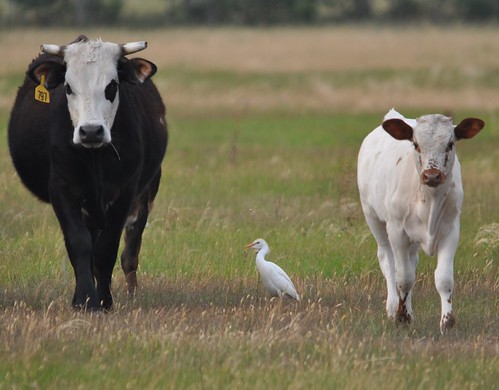
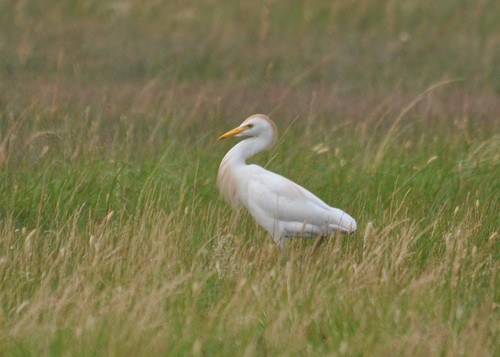
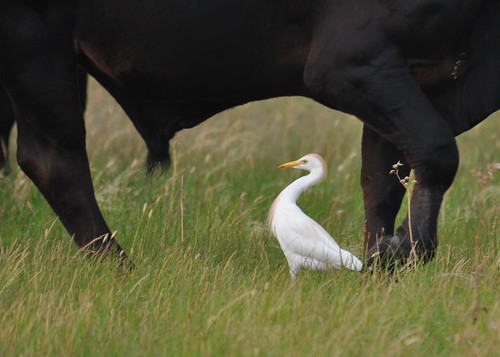
About this time the lens on my camera quit working in auto-focus mode. After trying a few things to jog it, as I have done in the past, I was forced to go to manual focus for the rest of the day. If I were taking portraits from 10ft away or landscapes with a large f-stop this might not have been that bad; however, with tiny birds at 30ft it is near impossible to judge correct focus on manual--especially in the brief amount of time you are likely to have. It became more frustrating when we got to the pond and had decent looks at a Baltimore Oriole, Little Blue Heron, Carolina Chickadees, and even three Indigo Buntings. After taking some time to hope for a few migrating warblers (with no success), I headed back through the pasture to the driveway. As I was looking at a Meadowlark on a cedar post, I saw a woodpecker fly onto the top of one of wooden utility poles to my left. At first I assumed that it was another one of the many Red-bellied Woodpeckers that I had been seeing all morning. Such as this one (remember, manual focus now)...
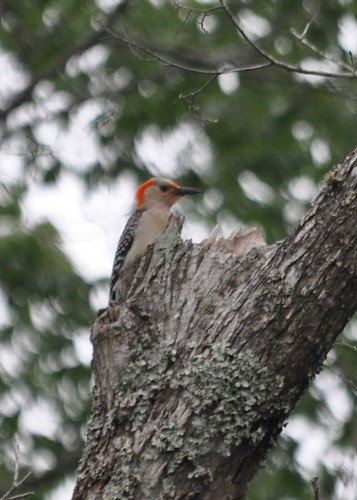
Despite its name, this bird rarely is identified by a red belly, but more by its "ladder-back" and the red on its head. In contrast, the bird I was looking at appears true to his name.
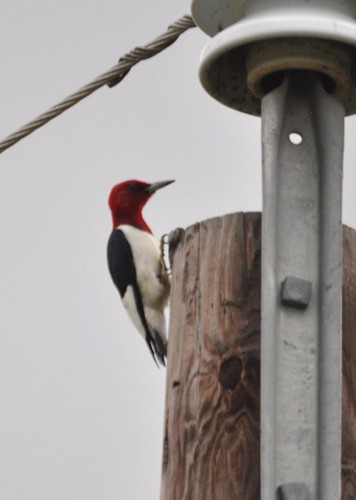
This Red-headed Woodpecker has brilliant markings, and the large white patch on the wings bisect them horizontally when spread out. I got a great look at this after he spotted me and flew on to the next pole.
After a cup of coffee and tallying up the total back at the house it was time to head home. As I turned out of the gate an Eastern Kingbird alit on the barbed-wire fence. A Green Heron and a Great-blue Heron flew over head.

No comments:
Post a Comment